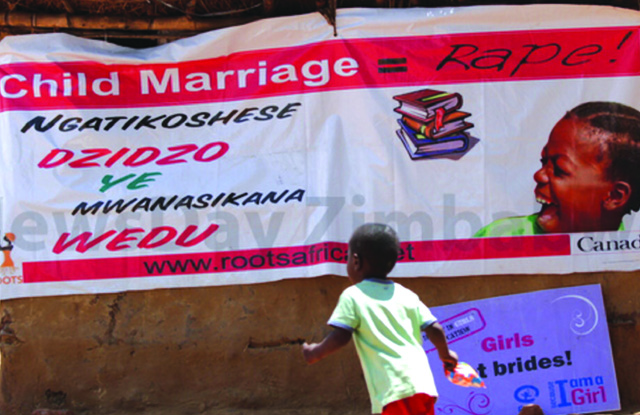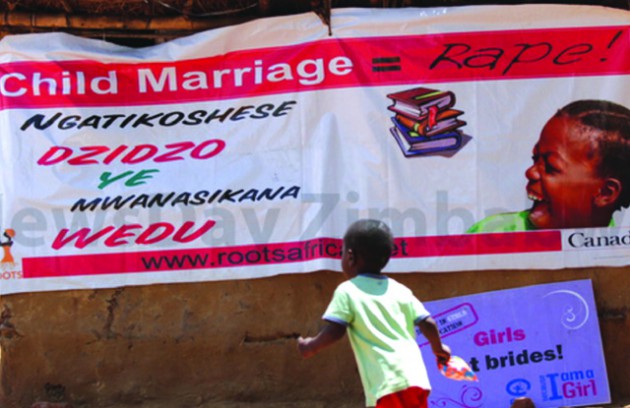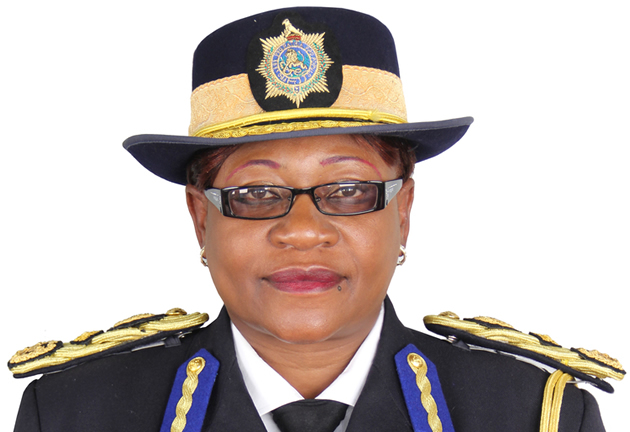Child marriages: battle isn’t over yet


A-child-runs-past-an-anti-child-marriages-poster-at-Case-Farm-in-Shamva-where-ROOTS-was-holding-a-community-dialogue-to-raise-awareness-on-the-dangers-of-marrying-of-children
Sharleen Mohammed
Across Africa, millions of girls and young women are being forced into marriage – and it is as if the continent is living generations and ages ago. International Centre for Research on Women (ICRW) says girls who marry between the ages of 10 and 14 are five times likely to die during pregnancy or child birth as women in their early 20’s.“Once married, (a child bride) is more likely to be a victim of domestic violence and suffer health complications associated with early sexual activity and childbearing notes ICRW.
Forced child marriages imposes social isolation on girls, bringing unwanted separation from their friends and family, once married, girls are most likely to feel powerless to refuse sex.
Child brides find it difficult to insist on condom use by husbands who are usually older and more sexually experienced making the girls vulnerable to HIV, cervical cancer including STIs.
Child marriage can result in bonded labour or enslavement a sentence to regular exposure to domestic or sexual violence and a pathway to commercial exploitation.
Child brides are also under intense pressure to fall pregnant immediately after marriage presenting a major risk for both mother and baby.
Although the country celebrated a historic constitutional court ruling banning marrying any women bellow the age 18 earlier this year, the war is not ceding yet as more and more young girls are falling victim to early marriages.
The Zimbabwe Multiple Indicator Monitoring Survey indicates that 21% of children, mostly girls, are married before the age of 18.
The survey further explains that these marriages are not taking place in a vacuum, poverty, cultural and religious practices are the key drivers of child marriages in Zimbabwe.
United Nations International Children’s Emergency Fund (UNICEF) points that marrying of a child is a human rights violation , a catalyst for gender inequality and contributes to persistent poverty that is passed from generation to generation.
“Early child marriage deprives girls of an education, increases the likelihood of sexual violence, poverty and risk of complications or even death in childbirth. Nearly a third of girls in Zimbabwe marry before 18 and 4% before 15.
“Children living in farming and mining communities in Zimbabwe are at greatest risk to be married young,” notes UNICEF.
Child marriage is a huge issue in Zimbabwe which is among other Africa countries with the highest child marriage prevalence rates in the world (31%).
Under the marriage act, girls under 16 can marry at 18, girls between the ages of 16 and 18 can get married with the consent of their parents or if a guardian refuses consent, with the consent of a high court judge(section 20).
However, Malawi had one of the world’s highest rates of child marriage, with more than half of girls forced out of school and into marriage as children, some as early as age 9.
Child marriage in Malawi was due to complex economic, cultural and religious factors caused and added to the consequence of poverty, gender-based violence and inequality that girls live with every day. Malawi was the first African country that passed a law banning child marriage which rose the minimum age for marriage to 18 in 2015
Child marriage directly hinders the achievement of Sustainable Development Goals
<Http://www.girlsnotbrides.org/ending-child-marriage-will-help-us-achieve-the-global-goals-heres-how/>
Which simply means the international community will not fulfil its vision of a more sustainable world for all unless it tackles child marriage.
Globally, the rates of child marriage are slowly declining. Growing commitments to address the issue, such as the inclusion of target 5.3 to end child, early and forced marriage in the Sustainable Development Goals, are encouraging.
Ending child marriage requires work across all sectors and at all levels. It requires us to understand the complex drivers behind the practice in different contexts and adapt our interventions accordingly.
A random survey carried out by this paper indicates that most school going girls and boys believe that the issue of forced marriages is a breakthrough on paper but does not change much in reality.
“As long as sex under 18 years is still happening and not outlawed, this does not help the affected, especially girls,” said Rutendo from Vainona High School.
Marriage yaitozombobatsira kuti the players (men) would be pushed to have a responsibility. Now they can “play and leave it”. She added.
Mrs Vaida a parent said, “On radio recently was the story of a 15-year old who beat up her mother for reporting that she had sex with a 22 year old boyfriend in a tuck-shop, What we need is not a change in laws but a change in the moral fiber of the people.
“We grew up in morally sound societies and it was rare to hear about child marriages, except among some apostolic sects.
“But now with all the rights accorded to children, you harp and scream about a simple law that does not change anything.
“Yet the children themselves want to get married so that they can “do it freely”. We are going nowhere very fast” she added.
The writer is a freelance journalist based in Harare with interest in social issues. She can be contacted on [email protected]










Comments